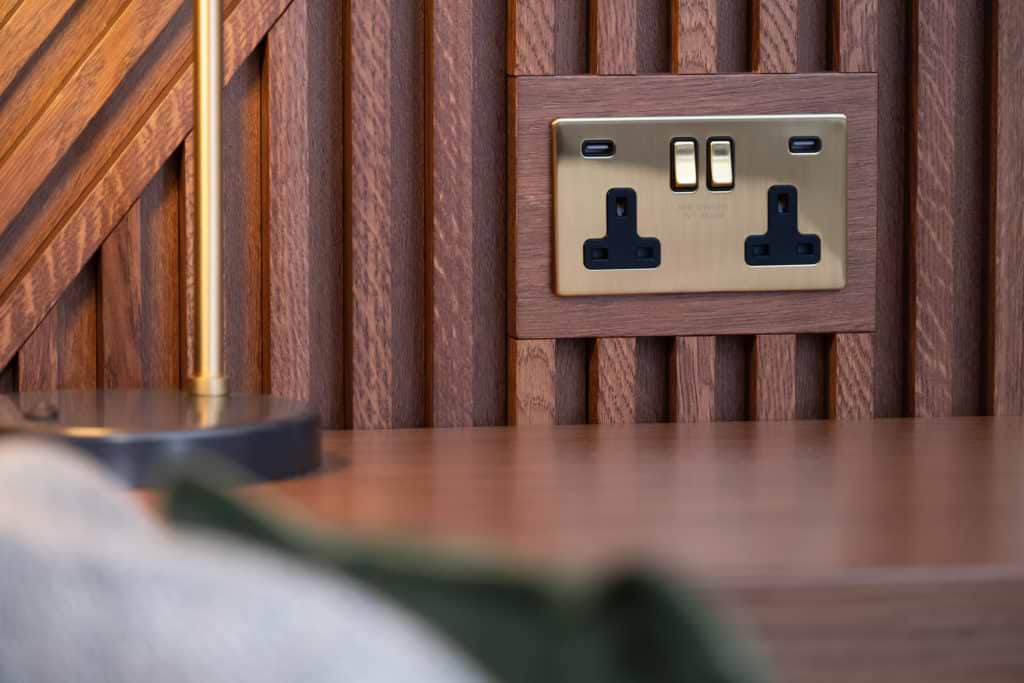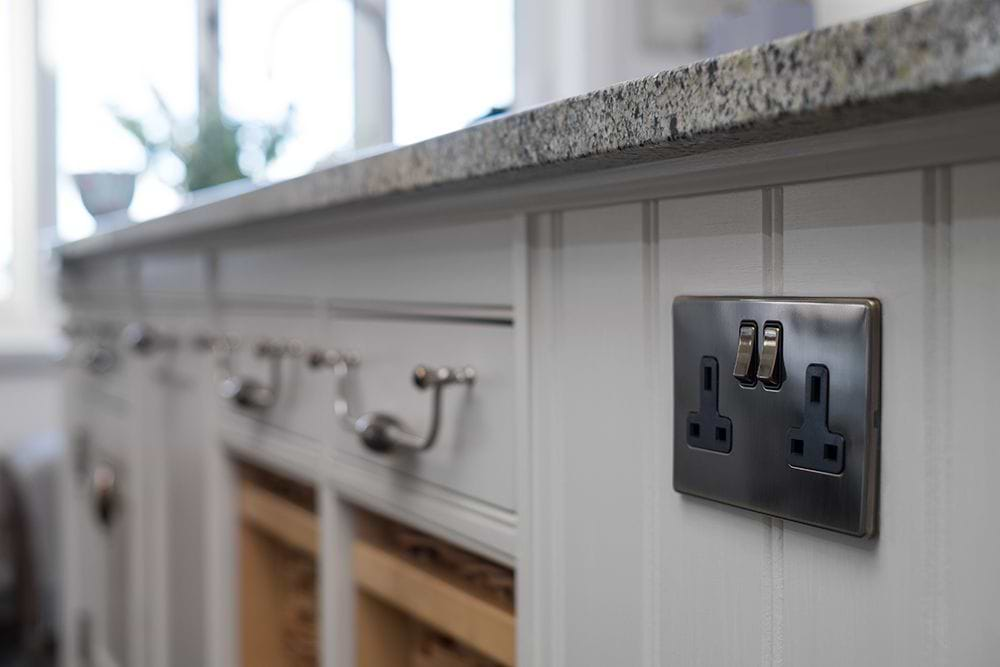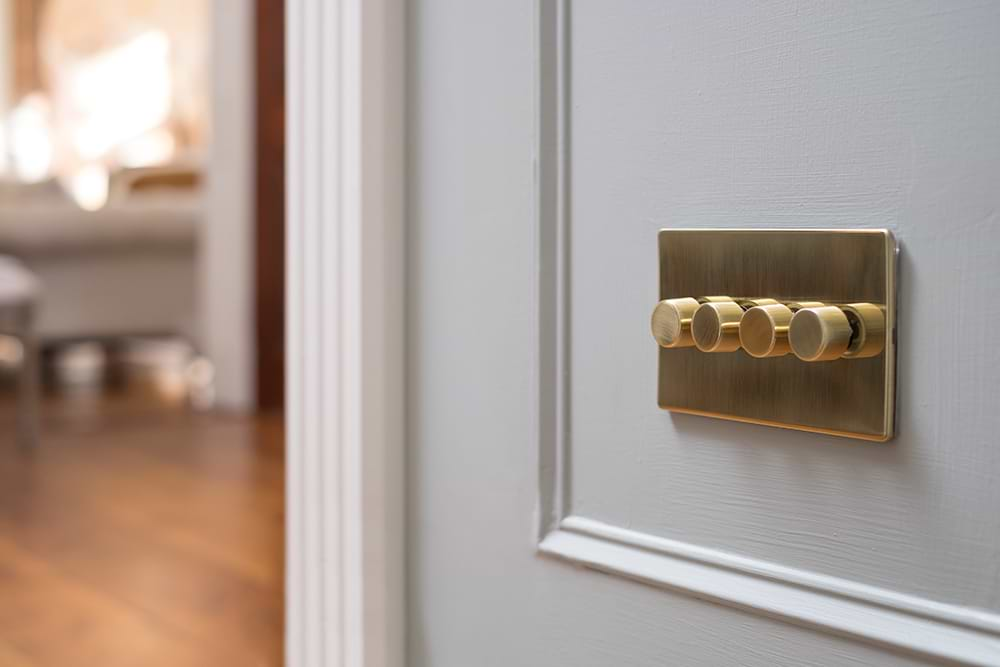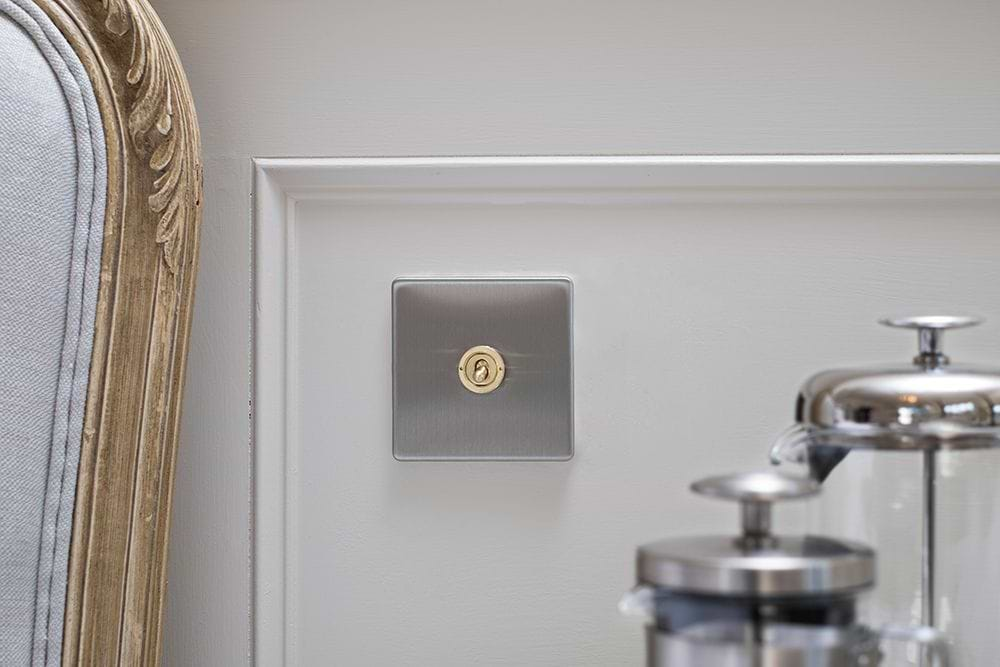Considerations To Make When Buying Sockets & Switches
Considerations To Make When Buying Sockets & Switches

Sockets and switches are often described as the ‘jewellery’ of an interior; however we see them as more than that. Sockets and switches are one of the most viewed and used interior design features. Every time you switch on a light, plug in, or switch on an appliance or phone charger your design decisions are being subconsciously seen and appraised.
A combination of beautiful aesthetic and practical functionality is key. We explore all of the important considerations you need to make during the process of selecting your sockets and switches.
Practical Socket Considerations
Choose the best socket functionality to suit your lifestyle. Should you have heavy reliance on I-phone and I-pad devices you may opt for sockets with USB connectivity in communal and bedroom spaces for ease of charging. The latest USB A + C socket to market features 2 ports. A USB A port on one side, and the USB C on the alternate side to support both earlier and later device technology. A standard USB A delivery is capped at around 3,100milliamp. Whilst a USB C will deliver a much higher milliamp, providing reliability and speed which is ultimately what everyone desires in their fast-paced lives. This combination offers a universal solution that is reliable, effective, and ultimately, quick.

Switches & Sockets Considerations For A Bathroom
A bathroom is considered a special location for electrical installation. Mainly because of the increased risk of electrical shock it poses to users. Bathrooms create high levels of condensation and humidity which turns into water vapour. Whilst water vapour can be classed as a weaker conductor of electricity, it will still come into contact with contaminants such as dust which contains many micro elements. These contaminants dissolve in water, creating the perfect foundations for a good conductor of electricity. To protect against this, traditional light switches should not be installed in a bathroom. Alternatively, they can be placed outside the bathroom or in a separate toilet depending on your setup.
Whilst light switches are strictly not allowed in bathrooms, a pull cord can be used in any location in the bathroom. Most favour in placing this by the door for ease. Whilst this is highly functional, many fear it will affect the aesthetic of their bathroom. In this case light switches can easily be installed and placed outside the entrance of the bathroom.
Aesthetics of Sockets
When choosing your switches check that the corresponding sockets are screwless. In spaces such as kitchens and bathrooms your sockets are as visible as your switches and unsightly screws do not make an attractive design statement.
Practical Switch Considerations
Light switches play an integral part in your lighting design when it comes to creating atmosphere and ambience. Dimmer switches allow you to easily control levels of brightness which immediately affect the mood of a room. For spaces where roles change throughout the day, the power to alter the brightness of light is highly desirable. For example, the morning cleansing routine in a bathroom requires optimum brightness. However come the evening when you may wish to take a relaxing soak in the bath, dimmed lighting will create that cosy, relaxing setting we all desire.
Let’s explore dimmers a little bit further, and how they can be utilised in your home. Auto detecting dimmers will automatically assess the current load on your lighting circuit and set your highest level of brightness and lowest level of brightness to optimise the lifespan of your bulbs. Trailing edge dimmers, provide a smoother dimming experience with modern LED technology, supporting the growing popularity of Linea LED lighting (or LED strip lighting) often found recessed in kitchen cabinets and ceiling coving. So look out for auto detecting, trailing edge dimmers to support the latest lighting technology.

Aesthetics of Switches
The choice of finish is always a key consideration. For a period look select one finish to match throughout your interior. For example, Georgian antique bronze, Victorian polished and aged brass, or Art Deco nickel and chrome. Alternatively, release your creativity and select switches and sockets with a blend of finishes to compliment other hardware finishes within your interior. Our Fusion range seamlessly blends two finishes so you don’t need to choose between two of your favourite finishes that feature throughout your home. In terms of style, the classic toggle switch makes a refined and timeless statement, whereas rocker switches deliver a cooler, more contemporary feel.
Ultimately, there is nothing negative about installing a dimmer switch in your home. But some people do prefer the aesthetic look of a toggle switch over a dimmer switch. A dimmer switch can look bulky and obtrusive in comparison to the intricate detailing of a toggle switch. This is very much down to personal consideration. However, toggle switches do generally suit the setting of period properties to retain the authenticity throughout.

Sockets and switches can be an expensive change in a home. Make choices that give you functionality, and work in harmony with the space. These important considerations will help you to plan, and select your sockets and switches with all factors considered.
